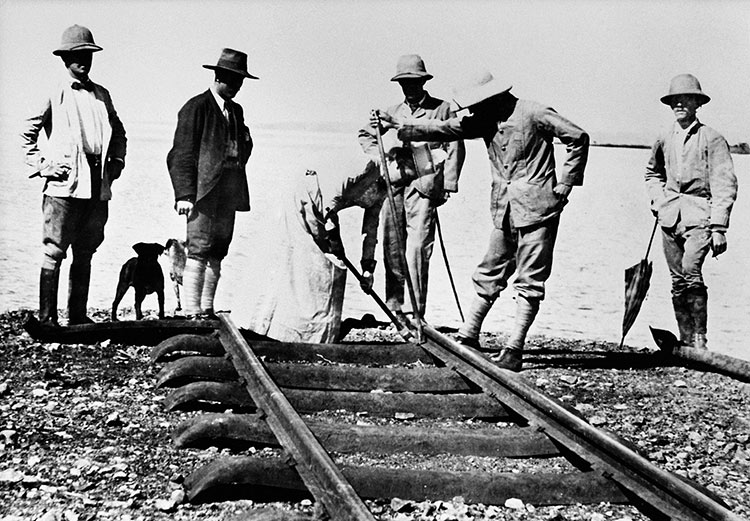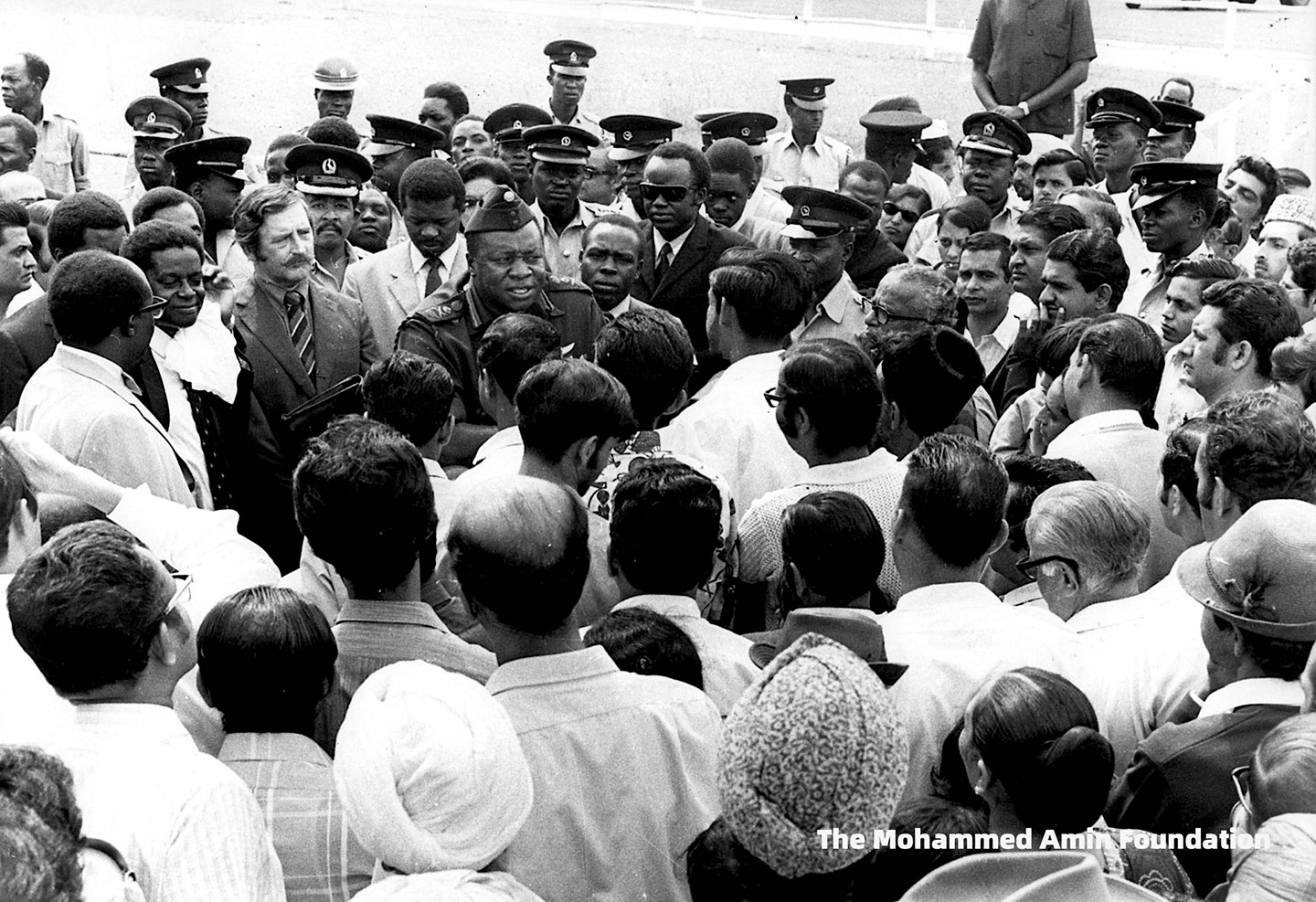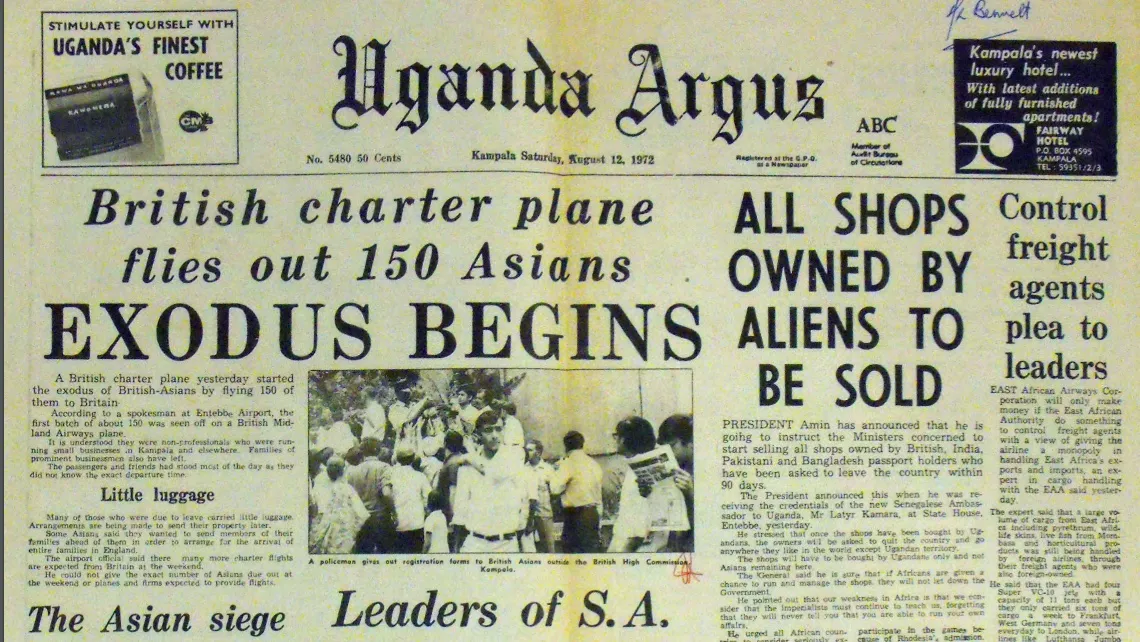.png)
In 1894, the British Empire established Uganda as a protectorate, following the 1893 transfer of administrative rights from the Imperial British East Africa Company. This move was not sudden; Britain's interest in Uganda stemmed from their quest to uncover the source of the Nile River. In 1877, at the invitation of the Kabaka, British missionaries began arriving in the prominent Kingdom of Buganda, marking the start of Britain's deeper involvement. By 1885, the Berlin Conference, a significant event in the scramble for Africa, officially allocated Uganda to the British. This protectorate relationship endured until 1962. Upon gaining independence from the British, Uganda saw Sir Edward Muteesa Walugembe rise as its first president. He concurrently held the esteemed title of Kabaka of Buganda, emphasizing the kingdom's influential role in Ugandan history and politics. The transition from protectorate to sovereign nation marked a pivotal chapter for Uganda.
In the late 19th century, the British aimed to connect East Africa's coast to Uganda's interior via the Uganda Railway. Facing challenging terrains, they sourced thousands of Indian laborers, known as "coolies," from another colony. Despite confronting severe conditions, diseases, and wildlife threats, these workers were instrumental in the railway's completion.
After the Uganda Railway's completion, many Indians settled in East Africa, seizing local economic opportunities ranging from small trades to significant commerce. They soon became key players in the region's economy, introducing new trade practices. Merging with local cultures through marriage and business, they retained their unique identity while enriching the East African multicultural landscape. This initiated a complex, enduring relationship between Indians and East Africans over the subsequent decades.


The Indian diaspora in Uganda experienced a period of significant growth and influence. These individuals made notable strides in various domains, particularly in commerce, where they established businesses ranging from small shops to larger enterprises. Beyond commerce, they were prominently involved in the education sector, founding institutions and bringing diverse knowledge. Additionally, many pursued specialized professions, such as medicine, law, and engineering. As the years went by, their economic, educational, and professional endeavors became deeply intertwined with Uganda's growth story.
In 1972, Uganda's then-leader, Idi Amin Dada, made a startling proclamation that shook the nation's Asian community. He declared that he had experienced a divine revelation in a dream, where God instructed him to expel the Asian population from Uganda. Justifying his decision, he explained, "Asians came to Uganda to build the railway. Now that the railway is finished, they must leave." This unexpected decree was announced at a press conference, giving the Asian community, many of whom had established their lives in Uganda for generations, a mere 90-day window to pack up and leave the nation. This left an indelible mark on Uganda's socio-cultural fabric, and the repercussions were felt for years.


In 1972, Ugandan dictator Idi Amin expelled Uganda's Asian community, many of whom were of Indian descent. Despite their significant contributions to Uganda's economy, they were suddenly rendered homeless. Holding British passports, thousands sought refuge in the UK. As they arrived, iconic photos captured their uncertain faces and newspaper headlines narrated their plight. The UK, although a refuge, posed its own set of challenges. These migrants, unfamiliar with the cold British weather and culture, grappled with integration, employment, and starting afresh. However, with time, resilience, and determination, the Ugandan-Indians reshaped their destiny and became an integral part of British society.
Please click to read below articles
Uganda Resettlement Board by Manoj PatelIn 1972, Uganda Asians, expelled from home, sought refuge in the UK. Around 30 families chose Hemel Hempstead for its proximity to London. Local organizations, like the New Town Commission and Salvation Army, collaboratively provided homes, jobs, and sustenance. Though challenges like harsh winters and unfamiliar jobs tested them, they persevered, forming groups like the Eastern Cultural Society. Key figures like Manjari Patel and Praghath Trivedi promoted cultural preservation. The Dacorum Multicultural Association and Hemel Hempstead Anti-Racism Council further aided integration and unity. Their journey epitomizes resilience, community cooperation, and multicultural collaboration.
Please click to read below articles
Global Migration of Asians During Colonial Rule by chiman Sheth
*Please click on the name writen on green to view their Articles
| Sr. No. | Family Name |
|---|---|
| 1 | Mr. Kantibhai Patel |
| 2 | Mr. Ramanbhai Patel |
| 3 | Mr. Raojibhai Patel |
| 4 | Mr. Kantibhai Kakad |
| 5 | Mr Ghanshyambhai Patel |
| 6 | Mr. Arvindbhai Brahmbhatt |
| 7 | Mr. Arvindbhai Bhatt |
| 8 | Mr. Dilipbhai Ruparelia |
| 9 | Mr. Laxmanbhai Parbat |
| 10 | Mr. Haribhai Hindocha |
| 11 | Mr. Manibhai Nathwani |
| 12 | Mr. Laxmidas Hindocha |
| 13 | Mr. Chunibhai Chandarana |
| 14 | Mr. Vinubhai Chandarana |
| 15 | Mr. Arjan Parbat |
| Sr. No. | Family Name |
|---|---|
| 16 | Mr. M Amlani |
| 17 | Mr. Jethalal Jobanputra |
| 18 | Mr. Manubhai Patel |
| 19 | Mr. Shashikant Patel |
| 20 | Mr. Bhanubhai Patel |
| 21 | Mr. Mohanbhai Thakkar |
| 22 | Mrs. Karia |
| 23 | Mr. Savabhai Karavadra |
| 24 | Mr. Jathalal Visanna |
| 25 | Mr. Shavjibhai Toshar |
| 26 | Mrs Kantaben Puiara |
| 27 | Miss. Sully and Gully |
| 28 | Mr. Tarlok Singh |
| 29 | Mr. Shantilal Trivedi |
| 30 | Mr. Gigabhai Keshwala |

The Uganda-Indian community in Hemel Hempstead has sculpted a legacy of cultural vibrancy, resilience, and entrepreneurial spirit. Today, modern visuals capture a tapestry of businesses, events, and landmarks tied to their heritage. The community, while preserving traditions, has seamlessly woven into the fabric of Hemel Hempstead. From yoga sessions that promote wellness to the rhythmic celebrations of Navratri and the luminous festivities of Diwali, their influence is palpable. Furthermore, the melodic cadence of Gujarati classes, music lessons, and the aromatic allure of Indian cookery classes reflect their dedication to cultural preservation. Added to this are charitable initiatives like sponsored walks and skill-based classes like jewelry-making, underlining their holistic contributions to the town.
Please click to read below articles
Rt.Hon. David Cameron: Contribution by Hindu Community